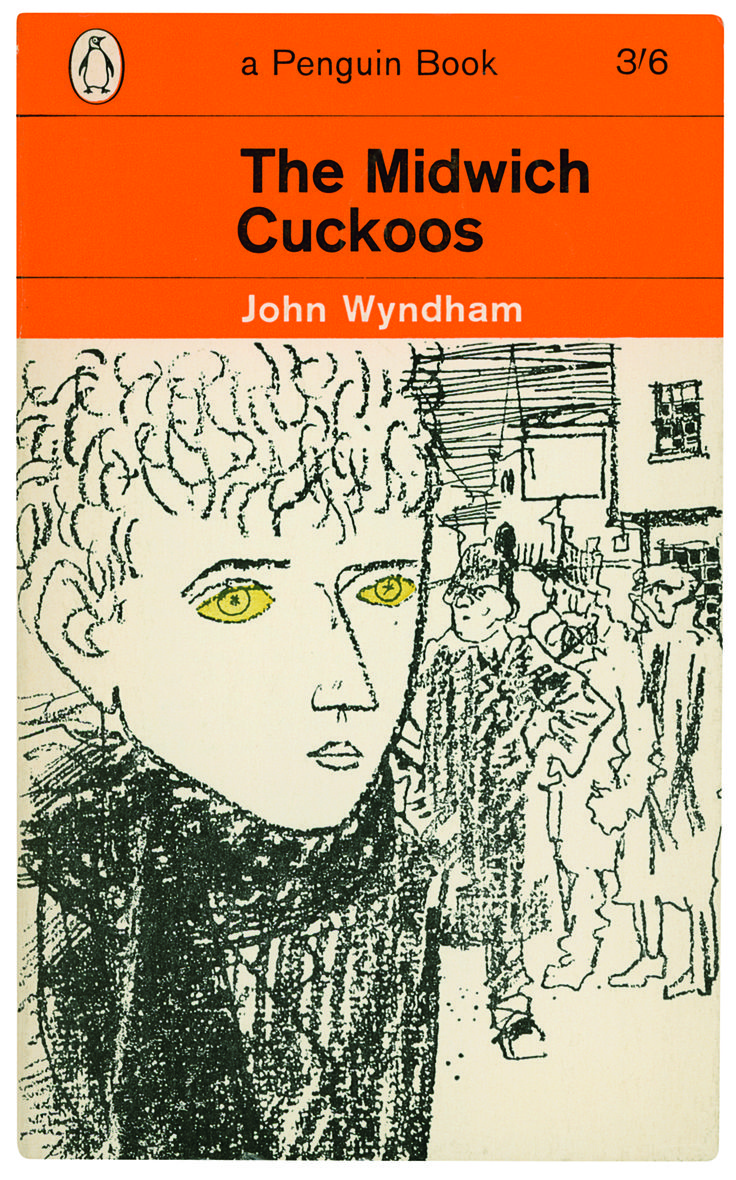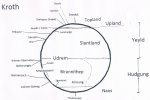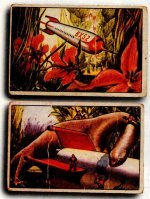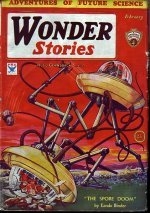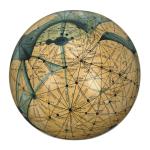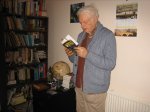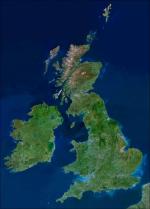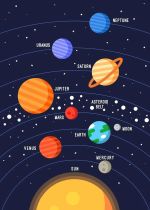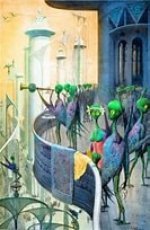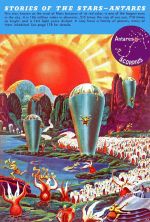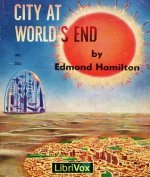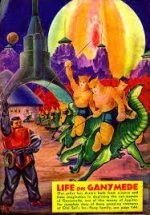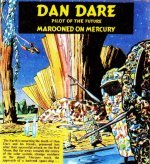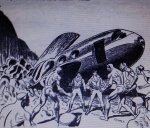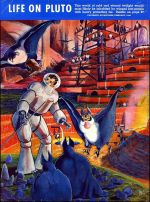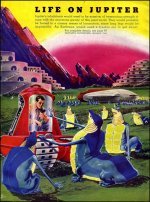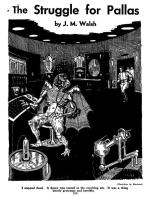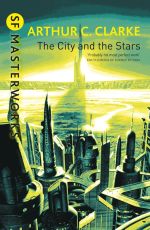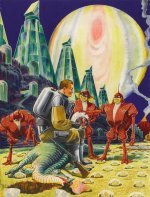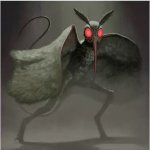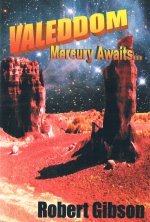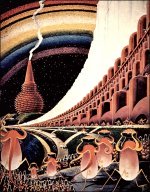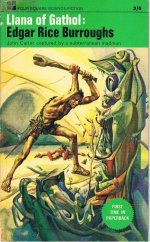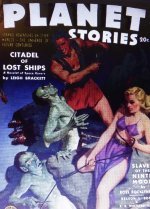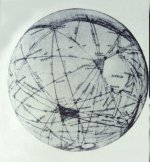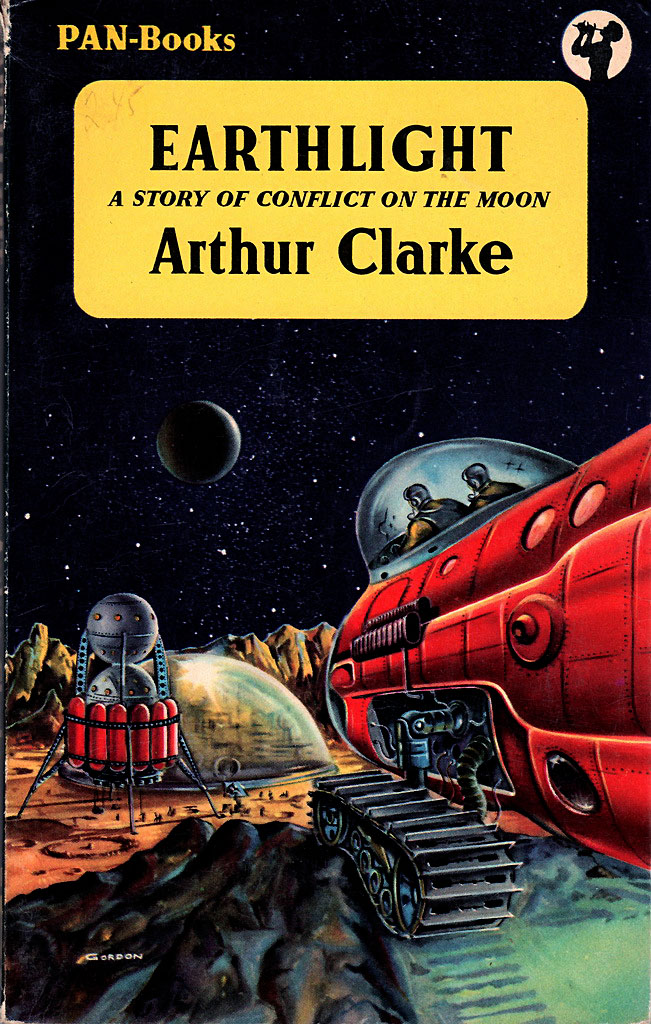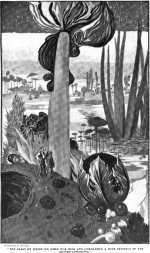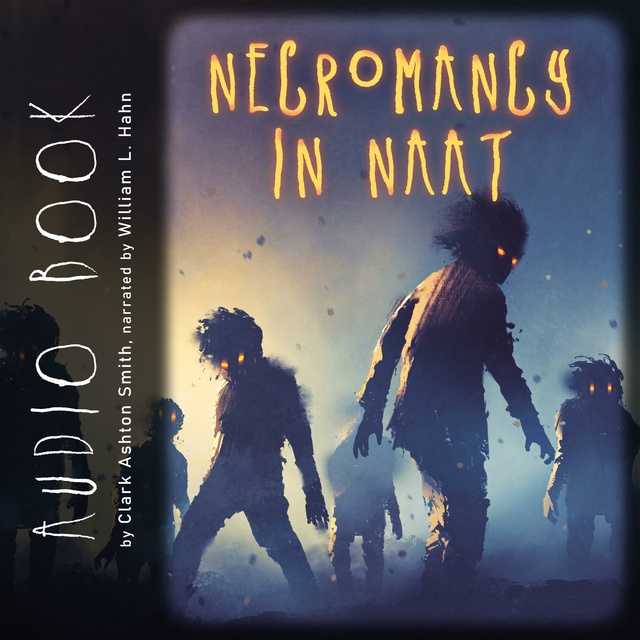a brief history of ooranye
9: nalre zitpoidl
and the great winter
[continued from 8: The Argon Era]
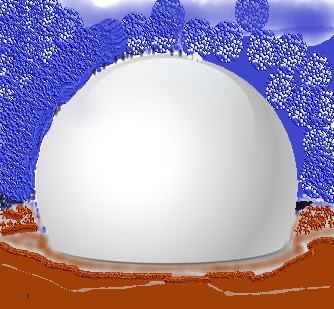
Stitching Syoom
Once more we find ourselves considering the career of a great Transition Sunnoad.
This time we must examine the fate of Nalre Zitpoidl 4854, who, unlike Fiarr Fosn 723, was very much of a survivor.
The men of the Argon Era eventually became a little too trusting of the world, or of humanity’s place in it. They thought they were doing well, because they knew that they were not making the mistake of their arrogant predecessors in Era 15; they believed that their greater modesty earned them a virtual guarantee of continued equilibrium between Syoom and Fyaym.
In the end, to counter this complacency, a move was made by Sunnoad Nalre Zitpoidl.
This extraordinary man was in one sense marked from birth: marked out, that is, by his actual birth-name. Uranians are generally “auto-appellant”, which is to say that their names are derived from the first sounds which they are heard to make. In the case of this particular baby, the message that issued from its mouth, in a strangely crystal-clear voice, was brief: zitpoidl…. Valeddom…. Noleddern…. Then as if a flow of alien communication had been cut off, the baby went back to making its natural gurgly sounds, one of which sounded like “Nal-re”. His parents, however, had recorded the previous sounds and duly reported them as defined words to the record-keepers of Oso, their home city. Cross-referencing of data soon established that ‘Valeddom’ was a tiny little-known Sunward planet lost to sight in the solar glare; on a few occasions back in the Phosphorus Era, Uranian scientists had picked up fragmentary radio messages from its silicon inhabitants, the zitpoidl. But nothing more had come of it, and it remained a complete mystery, as to why the baby from Oso should have mouthed those sounds. Still, custom was binding: what’s voiced is voiced: and so the infant had to grow up with a partly alien name, without ever knowing why fate had singled him out in this manner. As a young man, he spent some efforts trying to find out as much as he could from ancient astronomical records, but gave up that line of investigation – as all subsequent thinkers have done – as a blind alley. That’s how it often is, on Ooranye, with regard to the causes of things. But it is a different matter when we turn to results. It is well worth considering what arose from the widespread public sense that there was something special about Nalre Zitpoidl. The public made allowances, had unusual expectations, and, perhaps, took from him what they would not have taken from anybody else…
We must now jump ahead in our story, to his reign as Sunnoad. In his youth, Nalre Zitpoidl had become a daring explorer beyond sfy-50, the Syoom-Fyaym boundary, yet his later policy as Sunnoad was not an expansionist one; rather, it was consolidatory. But at the same time it was sufficiently striking and original, that – to everyone’s surprise including his own – the public caught on in a big way. “Stitching Syoom” was the idea of the moment: to such an extent that the emotional reverberations affected the day/night cycle, and a new era began. To explain, let us summarise the short and dazzling era which followed.
The Potassium Era lasted 152 days and six hours, during which a blaze of enthusiasm engulfed Syoom. The ideal to which millions now dedicated themselves was that civilization was a carpet, patchy and threadbare, that needed mending in its thinnest places. Metaphors to do with sewing and stitching abounded. Maps were consulted to ascertain the location of the thinnest patches, where the safety-contours were lowest. People took steps to found waystations and garrison towns at those spots.
Then the chain-reaction of consciousness, which had produced all this aware activity, was capped by a sensational news item.
The White Sun
On the plains of Voad, roughly mid-way between Vlamanor and Xydur, wayfarers noted what seemed like the top of a gleaming sphere rising to the surface through the gralm.
At the same time people all over Syoom were suddenly aware that everything around them seemed new and unfamiliar. It wasn’t a lapse of memory; they still knew who they were and what everything was in their daily lives. But the feeling of familiarity was gone. Many deaths resulted from the sheer strain of constant surprise and the lapses of concentration caused by excessive wonderment. The days of astonishment began to be called the Calcium Era.
Meanwhile, the intruding sphere on the plains of Voad was nicknamed the White Sun. It has been assumed, ever since, that it was a weapon of some kind, a form of attack. The perpetrators have never been identified.
The Offer
Eleven days into the Calcium Era, when it seemed that Syoom was threatened with mass insanity, a messenger came to Sunnoad Nalre Zitpoidl with a piece of news that announced yet another lurch of history. This led to a three-day-and-nine-hours period of excitement and suspense which came to be known as the Scandium Era.
The message was one of hope. The sender was an avian being, of a type new to the Syoomeans. The being, who gave nen’s name as Tjoren, claimed to come from deep in Fyaym, and to hail from a civilization which had had experience of phenomena like the White Sun.
Tjoren announced that the mental depredations of the White Sun would cease – temporarily – in a few hours’ time. But nen had no power to hold them off forever; to do that, more power was needed than nen’s race (the taharen) possessed. The only solution was to pool the racial subconscious of both species: taharen and Nenns.
Sunnoad Nalre Zitpoidl distrusted Tjoren immediately. But he found that his people were almost all against him on his issue – so much so that he had to tread carefully lest he be “Corrected”. As he later put it in his memoirs, his entourage was stiff with would-be Correctors waiting for the chance to pounce…
The difference of opinion was stark: whereas the Sunnoad thought that the White Sun was a nuisance that could be borne, and that it would be unjustifiably dangerous to accept Tjoren’s offer, his advisors were inclined the other way – though no one could imagine how the “pooling” would be implemented, they saw the offer as good, and the White Sun as lethal.
Popular sentiment backed the advisors, so forcefully as to seem unstoppable, especially as Tjoren turned out to be as good as nen’s word insofar as the emanation from the White Sun did cease… Almost everyone in Syoom seemed to have but one desperate idea, which was that at all costs those sickening effects must not be allowed to recommence.
Murder at Vlamanor
A meeting was arranged with the avian being. The conference was set up at Vlamanor. Before it could begin, came a series of three shocking announcements.
First, Tjoren had been murdered.
Second, the Sunnoad had confessed to the murder.
Third, he had then tried to surrender himself to Tjoren’s entourage, and had been turned away, the taharen proclaiming that the murderer’s punishment must come from his own people or his own conscience. Syoom as a whole would automatically pay the penalty in a wider sense, namely in that the taharen’s offer of help against the White Sun was now withdrawn.
Nevertheless, while people trembled in fear of a return of the White Sun, an utterly different nemesis was on its way. A freezing cloud appeared on the Syoom-Fyaym border and began to encroach from the direction in which the taharen’s homeland was supposed to lie.
The Great Winter
In fact, the White Sun was never seen again. All the fears of Syoom now centred on the new peril. As the cold cloud advanced, men were at first convinced that it was some kind of revenge for the murder of Tjoren. This belief was held despite the fact that the taharen themselves had refused to punish the actual murderer.
At this point in the story we, the compilers of this history, are more aware than ever of how our account of events is even stupider than those single-volume histories of Earth in which attempts are made to summarise the Renaissance or the Disfigurement in one paragraph. For example, we have given a completely inadequate account of the choices open to Nalre Zitpoidl. Therefore the reader has not much opportunity to form a plausible opinion as to why he acted as he did. Unfortunately this silliness is unavoidable, not only here but in later pages of our story. One consolation: our neglect is in line with Uranian tradition itself. Uranians attack a problem at the branches, not at the root, for they despair of ever mastering causation.
On this occasion their ignorance was spectacular.
They did not know, and moreover they did not even feel they needed to know, whether the unprecedented invasion of snow and ice, which now affected Syoom, was deliberately sent by a super-civilization which could control the weather. Even those who were of this opinion could not prove that the attack was in retaliation for the murder of Tjoren. And even those (the majority) who believed that it was, were divided in their opinion as to how much blame should be attached to the Sunnoad.
Should they condemn Nalre Zitpoidl for murdering the avian and thus provoking the Winter, or should they conclude, from the savagery of this retaliation, that the Sunnoad must have been right after all, in his distrust of the taharen? No consensus was reached as to what to do with the Sunnoad; so he lived on, an ambiguous, controversial figure, throughout the 10,620 days (36 Earth years) of the Titanium Era – the Age of Winter.
Meanwhile snow covered Syoom; doubtless not quite the type of snow experienced in winter on Earth, but equivalent nonetheless. Plant life suffered, though some species were hardy enough to survive and provide sustenance for a reduced human population. Life went on; a generation grew up who had never known aught but whiteness on the plains. The term “Syoom” gradually lost its statistical significance and became merely the name for the land; trade and travel between cities dwindled, and the hive-minds and vault-minds in the cities themselves died down to mere embers of consciousness. City states became isolated and government more than ever an affair of rulers pursuing their own interest without regard to any wider human community. With hindsight we can see that the foundations were being laid for the individualism of the Vanadium Era.
Eventually
the snow evaporated, almost as quickly as it had come. Nennkind woke up to the fact
that the great revenge, if revenge it was, had ended. Nothing further was ever heard
publicly from the taharen who were commonly thought to have inflicted the Winter
upon Syoom. Perhaps they had lost interest; perhaps, rather, they had been somehow
repulsed or even destroyed by their own creation. Who knows? To this day the mystery
of the Winter, and of the White Sun which preceded it, remains swallowed up in the
vastness and the silence of Fyaym.
